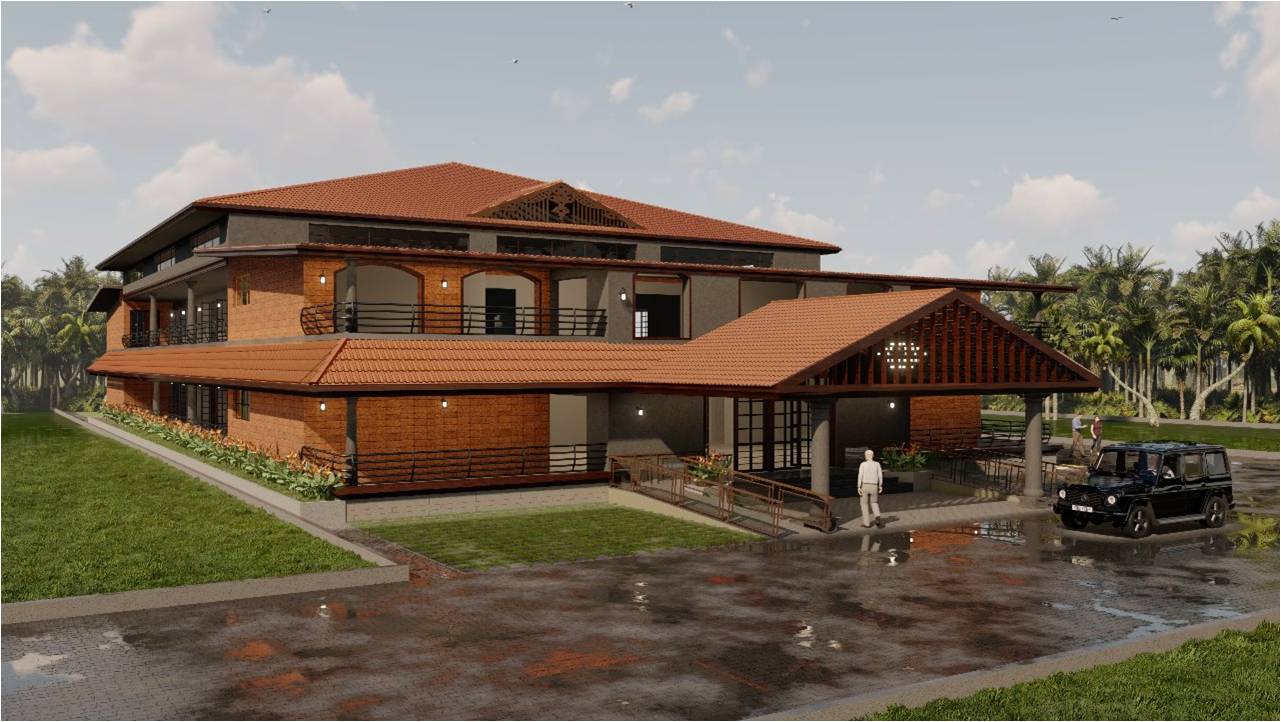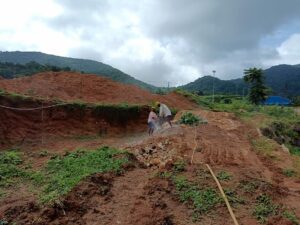The 15 shelters in 7 places on the way to Sabarimala will be inspired by local architecture and come up by next year.

An artist's impression of one of the midway shelters coming up on the route to Sabarimala. (Courtesy: CAI)
It has been some time since Suresh Sukumaran last paid obeisance to Lord Ayyappa in Sabarimala, one of the holiest sites for Hindus in Kerala. “It’s not for the faint-hearted,” says the 60-year-old on why he doesn’t visit anymore.
Over the years, the public relations veteran has made 17 Sabarimala pilgrimages, negotiating the hilly terrain through the dense forests of Periyar Wildlife Sanctuary, carrying the “Irumudi Kettu” — a travel pouch containing several pooja items — over 30-35 km.
Only those who have done 41 days of vratham — including observing celibacy, abstinence from tobacco, alcohol and non-vegetarian food, among other things — and carry the irumudi kettu, can climb the 18 holy steps to the shrine.
There are two-three routes pilgrims take to reach Sabarimala — the traditional route taken by Sukumaran involves a 35 km trek from Erumeli to the Pampa river and from Pampa to Sannidhanam (the sanctum sanctorum).
The second route which is more common these days is reaching Pampa directly by a vehicle and then trekking for up to 4 km to reach the holy shrine.
Now Kerala is building shelters to make this journey a bit easier.
They are coming up at seven centres: Maniyankode in Wayanad, Nilakkal in Pathanamthitta, Erumeli in Kottayam, Chengannur in Alappuzha, Chirangara in Thrissur, Kazhakkoottam in Thiruvananthapuram, and Sukapuram in Malappuram.

Construction underway at one of the proposed sites of of the shelters on the Sabarimala route. (Courtesy: CAI)
Faithful from Kerala, Tamil Nadu, Andhra Pradesh, Karnataka and Maharashtra have been making the journey since the annual pilgrim season began on 17 November.
And the Travancore Devaswom Board (TDB), which manages the shrine, expects a 40 to 50 per cent increase in numbers as compared to 27 lakh recorded last year.
Given the volumes of pilgrims, the temple, its surroundings as well as the access routes need solid infrastructure, of which shelters are a crucial aspect. Pilgrims arriving from different states will find these shelters useful to get ready for the expedition — and recharge or recuperate on their return.
These seven sites will have 15 shelters, all designed as places for resting and Annadhanam (meals provided as a charity), with dormitories and dining facilities.
At Nilakkal, the site nearest to Sabarimala, the plan envisages dormitories, dining, facilities, shops, parking grounds, a sewage treatment plant, administrative buildings, and other infrastructure.
“The main requirement was to provide resting places for the pilgrims in their overall journey. Nilakkal and Erumeli are in close proximity to the forest area. As for the other shelters, some of them are in the areas considered holy by the Ayappa devotees and visited by them during their pilgrimage,” says Varsha Jain, co-founder of Creative Architects and Interiors, the Chennai firm entrusted with designing the shelters.
Funded by Kerala Infrastructure Investment Fund, the midway shelters are likely to be completed by the end of 2023.
“More than anything, I think the shelters can ease the crowd at the Sannidhanam. With proper shelters around, entry to the shrine could be staggered,” Sukumaran tells South First.
According to the designers, the shelters draw inspiration from local architecture and will boast of elements such as the sloping roofs, columns and verandah railings, eaves, gutters and bands that are typical of Kerala.
“Clay tiles used as the roofing material and laterite stone cladding for the exterior walls strongly associate the buildings with the traditional architecture of Kerala,” explains Jain.
Thus, the design also incorporates local passive cooling techniques and strategic placement of openings that help ventilation, making it comfortable for inmates in Kerala’s tropical climate.
The corridors will have “multifunctional elements”: On one hand, these will protect the interiors from heavy rain and sunlight, and on the other, these will act as liminal spaces, “securing the nature-user connection”.
Keeping Annadhanam, which involves community meals, in mind, dining spaces have been planned as spacious to accommodate a number of people.
Also, the dormitories are designed to cater to a heavy footfall during the peak season. The spaces will have minimal columns to achieve unobstructed spaces.
Though Sabarimala pilgrimage is dominated by male devotees and the shrine does not allow entry to menstruating women, it is visited by thousands of pre-pubertal girls and post-menopausal women who would benefit immensely from clean, safe and hygienic shelters.
“The idea is to provide safe drinking water, hygienic toilet facilities and short stay,” says BS Prakash, commissioner of the Travancore Devaswom Board, the autonomous body that manages some 1,200 temples, including Sabarimala.
Not everybody feels a pressing need for such shelters, one being Chandra Kumar, 76, who has been to Sabarimala 16 times.
“I last visited Sabarimala a decade back and remember very comfortable makeshift shelters by the roadside,” recalls Hyderabad-based Kumar.
“You can stop for quick breaks, lie down or sit comfortably there. Today there must be many more resting points so I don’t think shelters are really needed,” he says.
Senior journalist N Muraleedharan, who has undertaken several journeys to the sacred shrine over the years, is more concerned about the ecosystem of the area.
“Forests around Sabarimala have been denuded over the past few decades,” he says. “My view is that there should be a freeze on building permanent structures.”
Muraleedharan also wants on provision of basic amenities like toilets based on green solutions, apart from arrangements for a steady supply of clean drinking water and food “at a nominal cost”.
He also pointed to the non-degradable material generated during the pilgrimage season that frequently chokes the nearby Pampa river and its downstream basins.
“One can imagine the stress this causes on the already fragile forest ecosystem,” Muraleedharan says.
“It’s high time that we thought how the whole pilgrimage could be turned into a green exercise.”

Apr 25, 2024

Apr 25, 2024

Apr 25, 2024

Apr 25, 2024

Apr 25, 2024

Apr 25, 2024